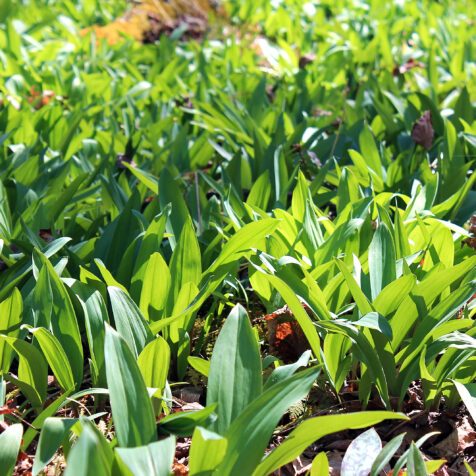Ramp Pesto

Description
Ramps are wild leeks that can be found in wet, densely wooded areas through central and eastern US and Canada. They grow in dense clusters in the marshy areas around rivers, streams, and brooks, and they thrive in early spring when the leaves of the forest canopy are thin, allowing light to pass through to the forest floor. They can be identified by their broad, smooth, green leaves and white or purple lower stems. Their taste can be described as a pungent mix between green onions and garlic. Ramps are at great risk of losing entire populations due to unsustainable harvesting practices. These delicate plants take up to 5 years to reach reproductive maturity. Therefore, when harvesting ramps in the wild, it’s important to follow a few rules to ensure these natural wonders continue to thrive in Vermont: tread lightly, never harvest more than a few from any single clump, and harvest from the center of each clump rather than from the outskirts. The best practice for ensuring the enduring health of the ramp population is to clip the ramps, rather than digging them up. Be mindful of other sensitive plants, such as trillium, growing among the ramps and take care not to disturb them. Once harvested, ramps can be used in any recipe where you might otherwise use garlic or onion. They are delicious pickled, grilled, or sauteed with other fresh spring veggies, though my absolute favorite thing to do with ramps is to make pesto! I like to make a big batch during the fleeting ramp season, and freeze it in smaller quantities for days when fresh ramps are just a memory. The pesto is delicious smeared on crusty bread or tossed with pasta.
Instructions
Clean the ramps well and roughly chop the shoots and leaves, then place them in a food processor. Add all ingredients except for the olive oil. Turn on the food processor and drizzle in the oil until the mixture reaches the desired consistency; not too dry, but not too oily. Serve on crackers, crusty bread, or toss with your favorite pasta and spring veggies.



